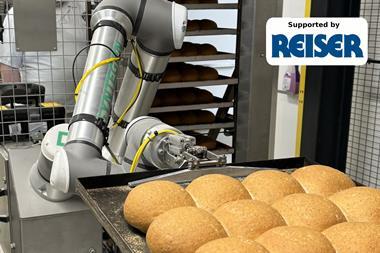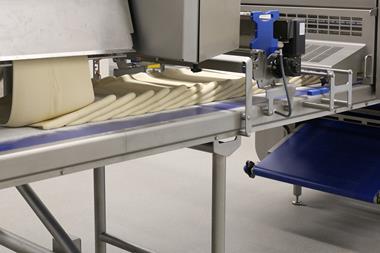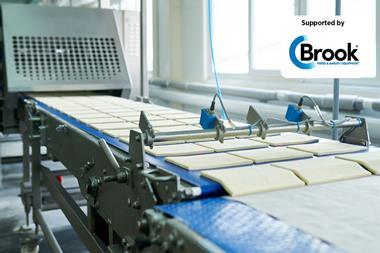Charity donations are a good way of using up surplus stock, but bakeries need to be sure they don’t fall foul of the regulations governing this process
Finding the balance between well-stocked shelves and wasted product is tough, and fear of disappointed customers and lost sales can lead to a surplus at the end of the day.
Rather than throw food away, bakers can donate it to a good cause – but how do you go about giving bakery surplus to charity? And what are the rules and regulations?
Unsurprisingly, food safety is the biggest priority at the UK’s largest food waste charity FareShare, which redistributes surplus from the food industry to smaller charities that supply it to those in need.
“The surplus we take must meet strict criteria, and comply with all UK food safety regulations,” says FareShare commercial manager Ashley Davies. “This means, for example, that all the surplus food we take needs to be properly packaged and, in the case of filled sandwiches and rolls, part of an unbroken chill chain. All food also needs to have at least 48 hours’ date life, to ensure we get it to our charities in time.”
Notably, most charities prefer white sliced breads and rolls that they can turn into sandwiches. “The staff and volunteers don’t always have the time or equipment to cut the bread,” explains Davies. “And many of the charities we supply support older people and children – both groups that might struggle to chew a crusty artisan loaf.”
Depending on the intended use of the products, food must be fit to pass on. Guidance from the British Sandwich and Food to Go Association (BSA) says products with a best-before date – such as bread, cakes containing no dairy, and biscuits – can be donated to charity after that date. As for hot bakery products, displayed at an ambient temperature, retailers must ensure they are in a safe and suitable condition to be donated once cooled.
The situation is different for foods with a use-by date, such as filled sandwiches. The use-by date must be obeyed and, until recently, could only be extended for 24 hours if the product was returned to the manufacturer for microbial testing – which meant food was often thrown away instead.
However, guidance developed by the BSA, the Food Standards Agency and the Department for Environment, Food & Rural Affairs (Defra) now enables the use-by date to be extended for items destined for charity if the retailer can demonstrate food is safe up to the new date (usually 24 hours later).
When distributing surplus product, there are benefits to using a central organisation, such as FareShare – which has worked with businesses including Addo Food Group, Gunstone’s Bakery, Fox’s Biscuits and Pukka Pies. “Organisations like FareShare not only help the business, but also vet the capability of the charity to handle the food,” says BSA director Jim Winship. “Not all small charities have the expertise to undertake HACCP analysis of all procedures or collect donations at agreed times.”
Giving direct to smaller local charities such as UK Harvest, Felix (in London) and Food Cycle are also viable options, as are local homeless and drop-in centres. Nottingham’s The Bakehouse, for example, partnered with local charity the Nottingham and Nottinghamshire Refugee Forum (NNRF) which distributes unsold bread to refugees and asylum seekers in the area.
“At the end of the day’s trading, we wrap up any unsold bread ready for collection by the charity – we’re constantly in touch and someone from the NNRF team comes by every couple of days, whenever they need to bolster their supplies,” explains Craig Poynter, owner of The Bakehouse.
Regardless of the route, the BSA advises a formal agreement is made to set out the responsibility of both parties, including details of food safety, labelling or allergens and the collection of the surplus.
There’s an app for that
Want to get rid of your surplus baked goods on an ad hoc basis? There’s an app for that. In fact there are several.
One of these is Too Good To Go (TGTG), which is used by firms including Real Patisserie in Brighton. The bakery sells ‘potluck’ bags of surplus artisan bread, pastries, desserts and sandwiches for £2.50 through the app, with shoppers paying for it via TGTG and collecting it at a designated time.
The app complements Real Patisserie’s existing charity arrangement, with the Brighton and Hove Food Waste Collective distributing to local charities. “We sell around 10 bags a day across our four sites,” says Real Patisserie director Alastair Gourlay.
Another app option is Olio, which enables businesses and the public to advertise specific surplus items and give them away for free. Angel Food Bakery, in Brighton, was one of the first firms to trial the service after its launch in 2016.
Cheers to beer and other uses
Not all bakery surplus can be donated to a charity but there are alternatives to throwing it in the bin or sending it to anaerobic digestion – such as using it in beer production, for starters.
This practice, although niche, is growing in popularity. In 2015 environmental campaigner Tristram Stuart created Toast Ale, which uses waste ranging from artisan breads to crust ends discarded by sandwich manufacturers as part of the brewing process.
The bread is toasted and mashed to produce breadcrumbs that are used to replace around 40% of the barley used in the brewing process.
Stuart wasn’t the first to do this. He was inspired by the Brussels Beer Project, which created Babylone with bread that would otherwise be wasted.
Glasgow micro-brewery Jaw Brew teamed up with bakery Aulds earlier this year to produce Hardtack, a low-alcohol blonde beer made from leftover morning rolls. The collaboration was set up by Glasgow Chamber of Commerce and Zero Waste Scotland after it identified an opportunity to strengthen the city’s economy through closer working.
Away from beer, European project Bread4pla believes there is an opportunity to turn bakery waste into a biodegradable film for bread packaging. The project ultimately seeks to obtain a high-purity lactic acid from bakery waste that can be used to create a biodegradable thermoplastic film from polylactic acid (PLA).


























No comments yet